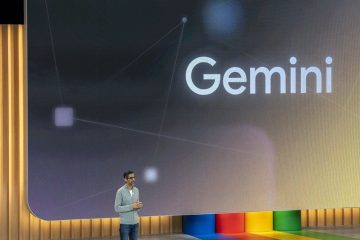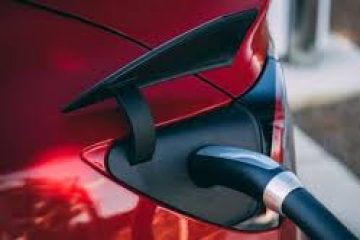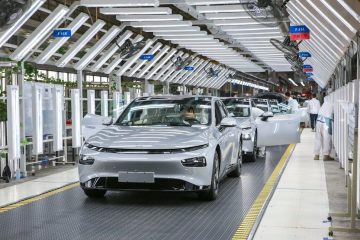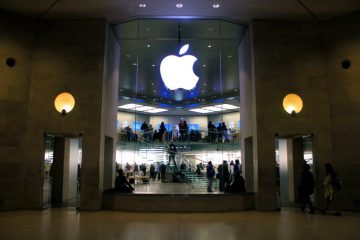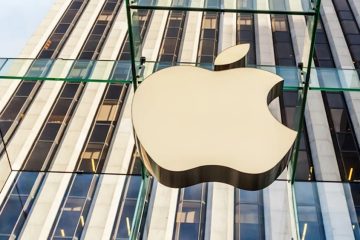Is Apple Stock Suddenly a Great Buy? A Wonky Stat Provides An Answer

This Wednesday, CEO Tim Cook announced that Apple’s fourth quarter revenues would fall far short of his previous forecast––chiefly because of flagging sales in China. Predictably, the iPhone-maker’s shares tanked the next day, swamping all the major indexes in its mighty wake. Since its peak in early October, Apple has shed $ 390 billion in market capitalization, or 36% of its value. That means the former trillion-dollar behemoth, which Wall Street almost universally praised as fully deserving to reach that milestone, would now need to see its shares climb 52% to regain that 13-figure status.
Even at its apex, Apple (aapl) was lauded as a great value stock, boasting a modest price-to-earnings valuation and a history of big stock buybacks. Now that it’s more than one-third cheaper, you’d think Apple would qualify as a screaming buy.
But is it? To assess whether Apple is truly a bargain, let’s analyze the underlying trends that will determine its future fortunes, using a wonky but essential measure called Economic Value Added, or EVA.
Institutional Shareholders Service (ISS) owns the EVA brand, and its ISS Analytics branch furnishes detailed analyses of hundreds of companies using the EVA methodology. EVA metrics diverge from conventional “GAAP” accounting in two major respects, and hence provide a far more accurate view of an enterprise’s profitability, and where that profitability is trending.
First, EVA adjusts the GAAP numbers by treating “expenses” such as R&D, advertising and restructuring charges as what they really are: investments designed to lift earnings for years into the future. So instead of deducting R&D spending each year as GAAP does, EVA capitalizes research costs, and amortizes those costs over the following five years. Using that approach shows the true picture when a company slashes R&D in a tough year to inflate earnings. This metric is especially revealing in the case of Apple, since as we’ll see, its research spending is lumpy, rising sharply in years where its birthing new products, and falling in the intervals between new launches.
(Read “Here’s What Analysts Are Saying About Apple’s Slowing iPhone Sales.”)
Second, the EVA paradigm adjusts reported earnings by deducting a “capital charge” equivalent to what an investor would earn on another holding that’s equally risky. The idea is that if your investment isn’t paying you any more than you could make elsewhere, you’re just breaking even. But if you’re beating the cost of capital, you’re really making money, or as economists would say, getting a premium over your “opportunity cost.” Think of a professional golfer measuring success by breaking par, or a duffer acing their handicap.
The profits a company generates above and beyond its cost of capital, subject to all the accounting adjustments, is Economic Value Added, or EVA, itself.
The real value of a tech giant
So what does EVA tell us about Apple, especially at these prices? For years, Apple has been a huge EVA generator, and remains so. The problem is the trend of more recent years, now exacerbated by the recent downshift in projected revenues.
In the past decade, Apple’s EVA history has divided into two parts. The golden years ran from 2009 to 2012. Over that period, Apple averaged an EVA margin, meaning EVA divided by sales, of 20.3%. That means that after deducting its cost of capital (currently 7.5%), Apple beat what investors would have earned on stocks carrying equal risk by more than 2000 basis points. It gets better. Over those four years, Apple’s sales also jumped, driving an explosion in EVA dollars. From 2009 to 2012, Apple’s sales soared five-fold, to $ 156 billon. EVA followed, growing from $ 5 billion to $ 35 billion.
But starting in 2013, Apple’s EVA margin dropped, averaging 17.5% through 2018, or 2.3 points below the previous four years. To Apple’s credit, it wasn’t a rise in costs of components and manufacturing that shrank margins. In fact, Apple’s cost-of-goods sold has remained steady at around 55% of sales for the past decade. It’s clear that Apple is expert at finding new efficiencies to streamline its manufacturing.
Instead, the compression resulted from two major areas: big increases in physical assets, including buildings such as its headquarters, and in R&D spending used to hatch new generations of iPhones. In 2009, Apple spent just 6.9% of sales on amortization of R&D and plant, property and equipment. By last year (its fiscal year ends September 30), the number had grown to 12.3%.
Despite the decline in margins, EVA kept waxing for a basic reason: Apple continued to expand revenues at a brisk clip. From 2012 to 2018, sales grew 70%, or 9.1% a year, to $ 265 billion. Despite falling margins, that growth drove a 40% rise in EVA, from $ 34.9 billion to $ 46.8 billion. In other words, rising revenues did a lot to compensate for the fall in the EVA margin.
A turning point?
That trend was already threatening to reverse, and the danger deepened with Cook’s shocking announcement this week. To make projections, the EVA team uses analysts’ consensus forecasts for staples such as GAAP sales and earnings, then aligns them to the EVA methodology. For 2019 through 2021, the consensus forecast called for average revenue growth of 4.2%, far below what Apple investors are used to (its sales grew 15.8% in fiscal 2018). And that’s before the big downward adjustments that will be triggered by the Cook bombshell.
So let’s make the reasonable assumption that the 2019 forecast drops from 4.6% to 2%. Even at 4.6%, Apple’s EVA was projected to grow only slightly as a percentage of sales. But at 2%, EVA growth would get slammed both by the slowdown in revenues and a shrinkage in the EVA margin, the latter because such expenses as R&D amortization are rising at a fixed rate that isn’t tied to revenues. In that 2% scenario, Apple’s EVA margin would fall from 17.5% to 17%, and EVA would shrink by $ 1.8 billion, to $ 45 billion.
“The problem is that sales growth is no longer keeping up with the compression in margins,” says John Roe, head of ISS Analytics. What really counts for investors, the extra reward a stock provides versus comparable holdings, is fading. And delivering that extra juice is what’s set Apple on its own pedestal.
It’s possible that Apple is so incredibly cheap that even with flat sales and falling EVA, it might still qualify as an excellent buy. But according to ISS Analytics, that’s not the case. Despite the 35%-plus drop in its share price, “Apple is still fully valued,” says Roe. In part, that’s because for the first time in its history, its EVA could decline for years to come, and yet its market cap still hasn’t fallen far enough to reflect its gloomier prospects. Before Cook’s announcement, ISS Analytics rated Apple as in the 85th percentile, towards the top of the cheap-versus-expensive scale. And Roe doesn’t expect the recent fall in price to change that rating much, since the outlook for its future earnings and EVA just fell along with its valuation.
According to EVA, the fall in Apple’s price is fully justified by its declining fundamentals. Sure, Apple will remain immensely profitable. But it’s heading, however gradually, in the wrong direction.

